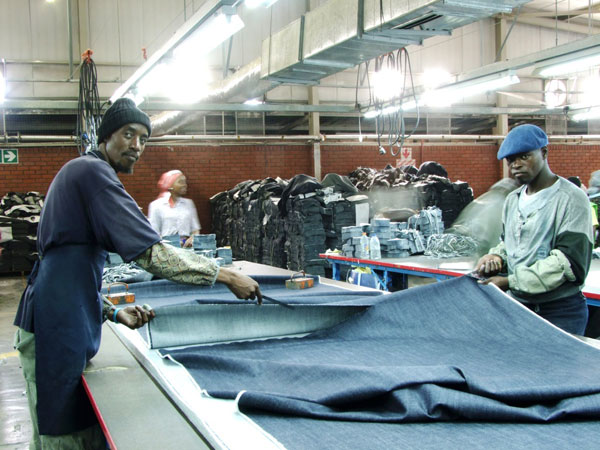The Living conditions of the faces behind fast fashion
When you go shopping, a mental picture of chock-n-block factory workers in a grungy hall in India might not pop into your mind, but this is the reality for many people who are creating the garments we buy for our wardrobes.
According to the War on Want organisation, 36% of China’s population (482-million people) live on less than USD$2 (approximately R16) a day. This extreme poverty forces many of them to seek employment in China’s industry-oriented urban areas.
Migrant workers don’t get the same benefits
In the late 1970s, China had strict control over people moving from rural to urban areas in order to prevent an influx of people to the cities. The people in the cities received state benefits, such as pensions, welfare, health care and so forth (while the people in rural areas didn’t).
As China moved to become a more open market, cheap labour from the rural areas helped the economy develop and the restrictions on migrant workers were lifted. Unfortunately, access to state benefits is still tied to where you live – so if you’re from a rural area of China and you need to move to one of the cities to find work, you probably won’t qualify for any type of support from government and you will have to endure the excessive overtime and health risks for a next-to-nothing wage.
“The worn look” is wearing people down
It has been reported that around one million workers were injured at work and about 20,000 suffered from diseases due to their occupation in 2009 alone. One of the riskiest labour practices (when it comes to making clothes) is creating that “worn jean” look. The sandblasting used to treat denim so that it looks older exposes workers to silica dust particles which can deadly.
What about other countries?
A lot of attention is given to textile workers in China and India (and rightfully so), but this doesn’t mean that the fashion industry in other countries can paint a much rosier picture. The Let’s Clean up Fashion Report of 2011 says that many UK high street retailers continue to post increased profits, but the real value of wages being paid to women and men in the industry is failing. Similar to those workers living in China and India, many factory workers in the UK are struggling to feed, clothe and shelter their families – the only thing that makes it worse is that they are working for retailers who have committed to providing their workers with a living wage.
Retailers argue that fingers should be pointed to government, who need to ensure that minimum wages more accurately reflect the needs of their citizens. While this is an important and valid point, it unfortunately contributes to the problem because the fashion industry are renowned for hopping from one supplier to the next in search of better deals – raising costs would simply scare of the retailer or buyer.
Many of the workers have striked for better wages. In 2010, thousands of Bangladeshi and Cambodian garment workers took to the street to demand a minimum wage (in Cambodia, they wanted their wage to be raised to $93 per month).
Closer to home
Last year, four garment worker unions in Lesotho demonstrated to demand better wages. One person was killed and many others were injured when riot police confronted the striking workers who were barricading roads leading to the factories (these factories are mainly owned by Japanese and Chinese entrepreneurs investing in the country).
Tšeliso Ramochela, secretary general of the Lesotho Chamber of Commerce and Industry, was quoted saying “Government has let the Chinese to do as they please. They abuse our people. Lesotho is one of the biggest garment exporters yet the textile workers are the least paid,” said Ramochela.
Factory workers told reporters that their minimum wage is estimated at USD$70 (approximately R560). They were demanding higher wages as well as benefits such as provident funds, medical aids, funeral schemes and paid maternity leave.
Factory worker Puleng Theko told the Lesotho Times that she was diagnosed with tuberculosis (TB) two years after she started working for the factory. Puleng works as a tailor in a denim producing company and her doctors told her that she had inhaled toxic substances.
“I was treated for TB. I also submitted the doctors’ papers so that I can be paid but even up to today I have not received a cent,” Puleng told the Lesotho Times.
Another worker told the Times that she was injured (she cut her finger) at work, but she was denied sick leave or medical compensation. She was also told that she would be replaced if she failed to show up for work.
Working together is the only option
The only way that decent wages and living conditions will be enforced is if brands and retailers pull together and commit to paying their workers decent wages. When this is done, the fashion industry will be able to give a clear message that the industry isn’t only about making profits – human rights also count.










